How many fruits starting with P can you list? 10? 20? That’s an impressive number. But I bet there are still several foods with P as their starter that you don’t even know yet.
Here, I’ll show you 26 fruit choices starting with P. Apart from their name, I also provide you with these fruits’ flavor, texture, usage, and more interesting information. With proper cooking methods, some of them will turn into delicious desserts or snacks.
Later, there are some P vegetables worth exploring. So let’s get started!
26 Fruits That Start with P with Filters
Here are 27 P-starting fruits, arranged by their level of recognition. Use the available filters to arrange them into national fruits, exotic varieties, and fruits used in dishes, beverages, or garnishes.
Peach
- For Beverages
- For Dishes
While peaches are one of the most well-liked fruits in America, it originally came from Northwest China. Peach is a stone fruit with a sweet flavor and soft, juicy texture.
The fruit has a velvety skin, and skin color varies from white to yellow or red, depending on the variety and ripeness. It comes in two main flesh colors: white, which is typically sweeter and less acidic, and yellow, with a slightly tart flavor.
You can consume fresh, canned, or dried peaches. The fruit is suitable for numerous treats, like breakfast foods, salads, and desserts (e.g., pies, cobblers, ice creams, especially desserts on the grill).
FYI, America has a whole month dedicated to peaches (in case you don’t know, it’s August, which is National Peach Month in the United States).
Pomegranate
- Afghanistan
- Azerbaijan
- Exotic
- For Beverages
- For Dishes
- National
Pomegranates are known for their thick, reddish skin covering multiple edible seeds called arils. These seeds are the true fruit of the pomegranate, with a sweet and tart flavor. This fruit is typically round, roughly the size of a large orange, and has a leathery texture to its skin.
Pomegranates are versatile in culinary uses. The arils can be eaten fresh, used as garnishes, or juiced. Pomegranate juice is also a popular beverage.
Not only is pomegranate delicious, but it also contains various antioxidants, potassium, and vitamin C. Note that eating pomegranates is quite a challenge since taking the inside seeds out is time-consuming. That’s why many prefer enjoying pomegranate as a drink over eating it.
Regarding its origin, pomegranate originates from Iran to Northern India but has been grown around the Mediterranean for a long time.
Papaya
- Malaysia
- For Beverages
- For Dishes
- National
Originating from Central America, papaya is a well-known tropical fruit in many countries. It’s oval in shape and can vary in size, but typically it’s about the size of a large melon.
The skin of the papaya is green when unripe and turns amber to orange as it ripens. Inside, the fruit has a hollow cavity filled with black, rounded seeds that are edible but have a slightly bitter and peppery flavor.
The flesh of the papaya is soft and succulent, with a creamy texture, so you can enjoy it raw, add it to salads, blend it into smoothies, or use it as a natural meat tenderizer. Unripe papaya is also edible and can be cooked to make dishes.
People on a diet are recommended to eat many papaya types as they contain less sugar than other fruits. Also, papaya contains antioxidants, vitamins, and other nutrients, which can reduce inflammation and improve the immune system.
Pineapple
- Antigua and Barbuda
- For Beverages
- For Dishes
- National
Pineapple, native to South America, is a tropical fruit made of numerous individual berries growing around a central core.
The fruit itself is large and has an oval or cylindrical shape. It can weigh between 1 to 8 pounds (0.5 to 3.6 kilograms). Inside, the flesh is juicy and bright yellow, with a fibrous, dense core running down the center
With its sweet, tangy flavor, pineapple is a preferable choice for desserts or salads. You can even turn this fruit into glazes or dressing sauces. Another use for pineapple is marinating meat, as it contains tenderizing properties.
Passion Fruit
- For Beverages
- For Dishes
Here is another fruit native to South America. Today, passion fruit is grown everywhere in the world, particularly in tropical and subtropical regions. It also has different names based on the region; for example, “lilikoi” in Hawaii or “mountain sweet cup” in Jamaica.
Passion fruit has different rind colors, from yellow to purple, orange, and so on. They provide sweet and sour flesh with multiple edible seeds under the rind.
They can be enjoyed fresh; just use a spoon to scoop the flesh, or use it to make desserts. You can also find passion fruit in various forms: tea, juice, or even a paste.
One little interesting fact for you: Despite its appearance, passion fruit belongs to the berry family.
Pear
- For Dishes
Native to Europe, pear belongs to the genus Pyrus within the family Rosaceae, sharing the family with apples and quinces.
A pear is a sweet fruit with a special bell shape, tapering towards the top and rounding at the bottom near the stem. It has a delicious flavor and soft, buttery texture when ripe.
They also come in various varieties across the world. Some pears have a smooth skin, while others are characterized by a rough, russeted surface. But most pears are sweeter, softer, and juicier than apples.
Pears can be found anywhere, fresh, canned, or dried, ideal for salads or desserts. People also use pear juice to make jellies and jams. Pear juice, if left fermented, can become a wine called pear cider or perry, just like apple cider.
Nutritionally, pears are a good source of dietary fiber, vitamin C, and some minerals such as potassium. Their high fiber content makes them ideal for the digestive system.
Persimmon
- For Dishes
Originating in China, persimmons are sweet, flavorful fruits that come from trees belonging to the genus Diospyros. Most persimmons you see today come from Asia, especially Japan.
These fruits are notable for their glossy, smooth, orange skin when ripe. They are typically round or oval in shape and come in two main types: astringent and non-astringent.
Astringent persimmons contain high levels of tannins and are very sour and bitter if eaten before fully ripe. Non-astringent persimmons are squat and somewhat resemble a tomato in shape; these can be eaten while still firm and have a sweet, mildly tangy flavor with a crunchy texture.
Plus, ripe persimmons are really soft with a sweet, honey-like flavor. Persimmons are often eaten fresh, but they can also be dried, cooked, or used in various culinary preparations, such as in salads, desserts, smoothies, and jams.
Pomelo
- For Beverages
- For Dishes
Pomelo, also known as pummelo, is the largest citrus fruit. Pomelo is the grapefruit’s ancestor, native to South and Southeast Asia.
Pomelos have a thick, green-to-yellowish rind, enclosing the segmented, juicy flesh. It is divided into two types: One with white flesh and one with pink flesh.
The fruit is known for its sweet and somewhat tangy flavor, with a bitterness that is much less pronounced than that of a grapefruit. However, pink flesh tends to be sweeter than the white ones.
Pomelos are also used in various culinary recipes, especially in Southeast Asian cuisine, like in salads, desserts, savory dishes, or juice. Asians often eat it as a dessert after a meal with some salt.
Plum
- For Dishes
Plums are small to medium-sized fruits that belong to the genus Prunus, part of the rose family, Rosaceae. There are more than 200 different kinds of plums in the world, but the most common plums are Japanese and European plums. The former has a longer shelf life and is also larger.
They are known for their smooth, shiny skin and juicy flesh, with a single large pit in the center. They come in various colors, including purple, red, yellow, and green, depending on the variety.
No matter their kind, plums are usually used in cooking, especially making jam. Some even ferment plum juice into wine. Of course, you can also enjoy them fresh.
Plums are rich in vitamins and minerals, including vitamin C, vitamin K, potassium, dietary fiber, and antioxidants.
Prune
- For Dishes
Prune is not a fruit’s name. Europeans tend to call their plums “fresh prunes” while Americans use “prunes” for the dried plums. Despite their unattractive appearance, prunes are recommended as they are rich in vitamins and nutrients.
There are multiple ways to eat prunes. You can mix them with nuts and chocolate chips for a midday snack. Chopped prunes are suitable for cereal, smoothies, or salads. They can even add flavor to savory dishes like soups and stews.
Making juice from prunes is not a bad idea, either.
Plumcot
- Exotic
- For Dishes
A plumcot is a hybrid fruit that combines the genetic traits of both plums and apricots. This crossbreeding results in a fruit that typically has a smooth, shiny skin similar to plum and can range in color from yellow to red or purple.
The flesh of a plumcot is juicy and sweet. The flesh can vary from firm to soft depending on the specific variety of plumcot. Some types have a more pronounced apricot flavor, and others lean more towards the sweetness and texture of a plum.
Like plums or apricots, you can eat them fresh as a simple snack. Plumcot can also be cooked into sauce and chutney to pair with savory dishes like chicken, pork, or fish.
Plantain
- For Dishes
- Fruit Vegetables
Don’t mistake plantains for bananas, though they really look alike. In fact, plantains share the same family as bananas. However, their flavors are absolutely different. Green plantains are bland and taste like yuca roots or potatoes.
When ripe, they turn sweeter but not as sweet as regular bananas. Moreover, their skin will turn black if it completely ripens. Plantains, ripe or unripe, are often fried and served as appetizers or snacks.
The popularity of this food has extended to numerous nations, and each one has its own variation of plantain cooking with different ingredients.
Persian Lime
- For Beverages
- For Dishes
Persian lime, aka Tahiti lime or Bearss lime, is a popular citrus fruit. Persian lime looks almost the same as key lime, except for its thicker skin, making the fruit look larger.
It has a distinctive bright green skin that turns yellow as it ripens, although it is often harvested and used while still green.
Moreover, in terms of taste, Persian lime is less sour than key lime. It also lacks the unique bitterness of key lime. They offer a juicy, acidic, and slightly sweet flavor.
From flavoring for fish and meats to a key component in cocktails and soft drinks, the juice of Persian limes is great for many recipes. Additionally, the zest of the lime adds a citrusy note to baked goods, marinades, and sauces.
Persian limes are seedless, which is another reason for their widespread popularity in cooking and beverage preparation.
Pawpaw
- For Dishes
Pawpaw fruit, also known as papaw or paw-paw, refers to the fruit of the Asimina triloba tree, native to the eastern United States and Canada.
Pawpaw fruits are oblong and can range in size from 3 to 6 inches in length. Their skin is green when unripe, turning yellowish or brown as they mature. Though the pawpaw look isn’t so attractive, the inside is a different story.
Its flesh is soft like a puree and tastes sweet, custard-like as banana, or mango. Pawpaw’s aftertaste is yeasty and floral, like wheat beer.
Pawpaw’s flesh is soft and sweet. While pawpaw can be eaten raw, they are normally used in baking desserts and making ice cream. Remember that this fruit only lasts for a short time, two or three days at the counter and a week if refrigerated.
Pitaya
- For Beverages
- For Dishes
Known for its alternative name – dragon fruit, pitaya possesses a striking look With a unique appearance: a bright, pink or yellow outer skin that’s covered in green, scale-like leaves, resembling a dragon, hence its nickname.
The fruit comes in three main varieties. The most common type has white flesh with black seeds and pink skin, another variety has red flesh with black seeds and pink skin, and the third type has white flesh with black seeds and yellow skin.
Slicing the pitaya in half will reveal its white flesh with countless seeds inside. Don’t worry about those seeds, they are all edible. Some pitayas have their flesh vivid red, which costs more money. But apart from the color, all pitayas taste sweet with a kiwi-like texture.
Originating from the Americas, it’s now grown in tropical and subtropical regions worldwide.
Pineberry
- Exotic
- For Garnish
As its name indicates, pineberry fruit is a mixture between pineapple and strawberry. For appearance, pineberries look just like strawberries, only smaller with white color and red seeds.
Their flavor is somewhat the same as pineapple, sweet and tart at the same time. You can use them for desserts, just like typical strawberries. They taste best when fresh. Soft cheese like burrata or goat cheese is the most suitable combination with these pineberries.
Nutritionally, pineberries offer similar benefits to red strawberries. They are low in calories and rich in vitamins A, C, and antioxidants.
Pumpkin
- For Dishes
- Fruit Vegetables
You may be surprised by pumpkins on this list as many think they are vegetables. Actually, they are fruits.
Pumpkins are typically round and have smooth, ribbed skin. The color of their outer skin can vary widely, but they are most commonly known for their vibrant orange hue. It has a thick shell, which contains the seeds and pulp.
Aside from that, pumpkins also appear in numerous recipes, such as pumpkin pie or pumpkin puree. They are also the iconic symbol of fall in many Western countries.
Plus, their other parts, like seeds, leaves, or flowers, are also edible. Even green pumpkins can be used as summer squash or zucchini.
Pequi
- Exotic
- For Dishes
Pequi is a common fruit native to the Cerrado region of Brazil. You can find it sold in street carts or as an ingredient in multiple dishes or drinks. Chicken rice with pequi is a must-try specialty in Brazil.
The fruit is notable for its strong flavor and aroma. However, when eating it raw, there is one part you must pay close attention to, pequi’s sharp spines. These spines are inside the flesh and surround the pequi’s pit.
When consuming pequi, it’s common practice to gently nibble the soft flesh around the pit to savor its rich, nutty, and slightly cheesy flavor without biting into the spines.
Peumo
- Exotic
- For Dishes
Peumo fruit comes from the peumo tree (Cryptocarya alba), native to central Chile and parts of Argentina.
These fruits are small, edible, and will turn vividly reddish-brown when ripe. The fruit is consumed fresh by locals and is also used in traditional Chilean recipes. It can be made into jams or jellies.
Besides its use as a food, the peumo tree and its fruit have medicinal applications among indigenous and local communities. Various parts of the tree, including the fruit, leaves, and bark, have been used in traditional medicine for treating colds.
Physalis
- Exotic
- For Garnish
Physalis, often known as cape gooseberry, ground cherry, or goldenberry, is a small, spherical fruit wrapped in a distinctive papery husk.
This fruit looks strange, with a thin skin wrapping a tart berry resembling a Chinese lantern. Thus, it earned the name “Chinese lantern.” However, physalis originated in South American countries.
When ripe, the fruit itself is about the size of a cherry tomato and changes color from green to golden-yellow. Ripe fruit has a sweet and tangy flavor with tropical undertones, often compared to a blend of pineapple, tomato, and mango.
And their texture is the same as firm tomatoes. You can eat them raw or use them in salads, desserts, a garnish, or fruit preserves.
Pink Pearl Apple
- For Beverages
- For Dishes
- For Garnish
Developed in the mid-20th century by a Northern California breeder named Albert Etter, Pink Pearl apple is one of the most beautiful varieties.
The fruit gets that name for its flesh color. When slicing them in half, you’ll see a bright rosy, or almost red flesh inside.
This color is the reason why many people choose Pink Pearl apples to garnish their desserts or salads. Their sweet and tart taste also matches perfectly with dishes like salads and desserts. And yes, they are also ideal for fresh consumption.
Ponkan
- Exotic
- For Beverages
Originating from China, ponkan is one of the oldest citrus types. Despite being the hybrid between mandarin and pomelos, it was once mistaken as pure mandarin because of its popularity. The reason for ponkan being favorable may lie in its loose “ring”.
This “ring” makes ponkan much easier to peel. Furthermore, it is larger than most other tangerines and mandarins, with a somewhat flattened shape at the top and bottom.
Inside, the fruit is divided into segments, similar to other citrus fruits, and the flesh is juicy, sweet, and slightly tangy. It’s also less acidic compared to some other citrus varieties. Beyond being consumed fresh, ponkan is perfect for salads, desserts, and beverages.
And like other citrus fruits, ponkans are a good source of vitamin C and dietary fiber.
Pulasan
- Exotic
- For Beverages
As a native Malaysian fruit, pulasans often get confused with rambutans because of their close relationship. However, you can differentiate them by looking closely at their appearances. While rambutans have various hairy spines, pulasans don’t.
The fruit itself is about the size of a small apple, with a round to oval shape. Pulasans are much sweeter than rambutans, and their flesh separates more easily from the seed.
Pulasans are primarily eaten fresh, straight from the tree. Its seeds are also different from rambutan ones as they can be consumed as beverages after being roasted.
Pigface
- Exotic
You may not feel familiar with this fruit, but pigfaces have been a part of every Australian’s life. It’s no surprise if you find them growing right beside the walking path.
Pigface’s flowers are bright pink, and when the fruits turn ripe, their skin becomes red and purple, so it’s really easy to spot them.
People often eat pigfaces as a snack since they are pretty sweet and salty at the same time, just like eating strawberries or apples with salt. In addition, when mixed with water, the juice in their leaves can cure sore throat and mild bacterial infections.
Phalsa
- Exotic
- For Beverages
Also called Indian sherbet berries, phalsa looks like blueberries but has red-purple skin when ripe. And just as its other name suggests, phalsa’s juice is used to make refreshments in summer.
Also, for ripe phalsa’ sweet and sour flavor, you can eat these fruits raw or use them in desserts. Phalsa season usually starts during summer, and Indians will harvest them daily.
Petit Rouge Grape
- For Beverages
If you are a wine gourmet, you must have heard of Petit Rouge grapes. Growing only in the Valle d’Aosta region of Italy, these grapes are the area’s oldest and most common plants.
Thanks to their dark color and floral aroma, Petit Rouge grapes are used in multiple wines like Enfer d’Arvier, Torrette, Chambave, Pinot Noir, and many more, as they will produce a tart, crisp red color and intense scent to the wine.
Which Ones Are Common Vegetables Starting with P?
Below are five well-known “P” vegetables:
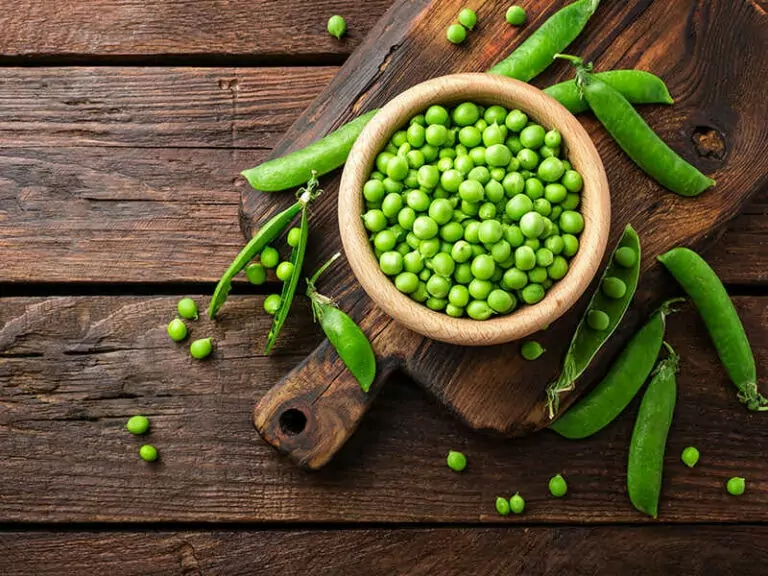
Pea
They are small, sweet green seeds, often eaten as a side dish or added to salads and stews.
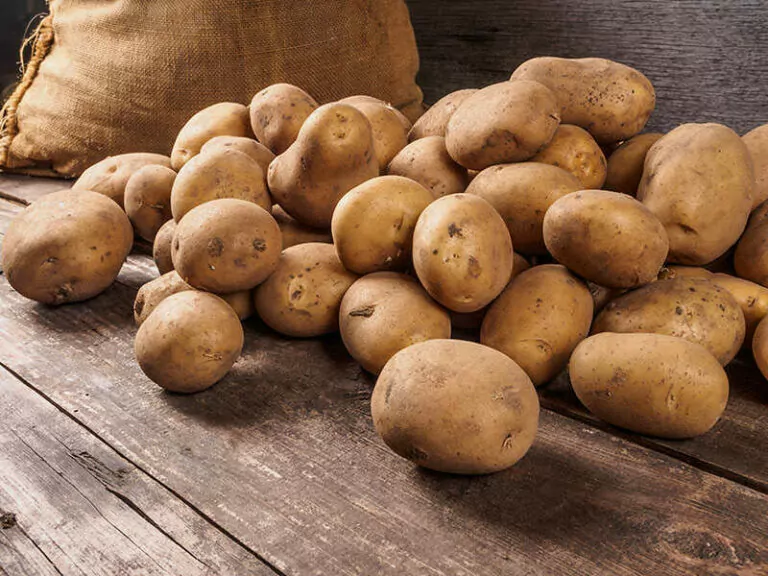
Potato
It’s a popular root vegetable with high versatility in cooking, from baking to frying.
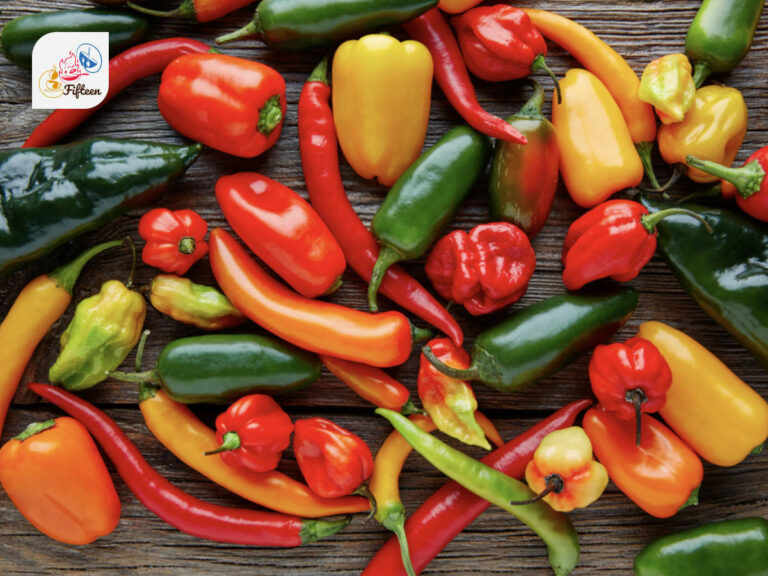
Pepper
Peppers, from sweet bell peppers to hot chilies, add flavor and color to dishes.
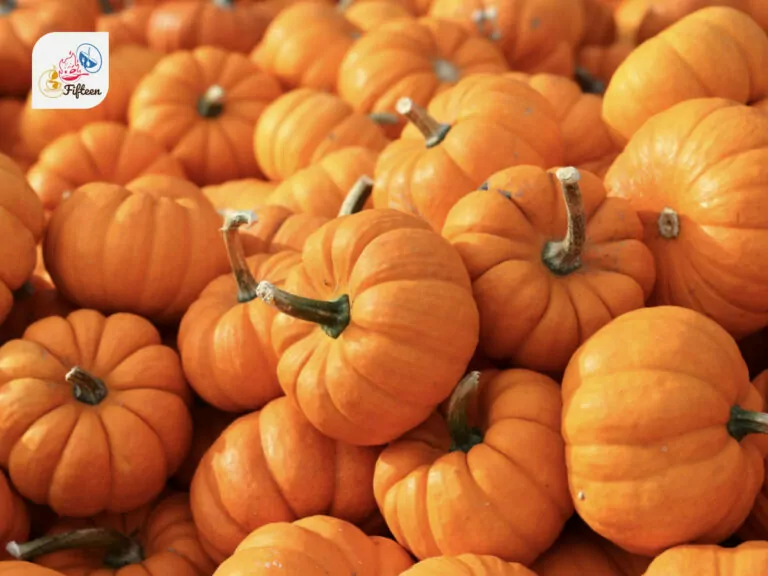
Pumpkin
Pumpkin is a fruit vegetable used in soups, pies, and fall decorations.
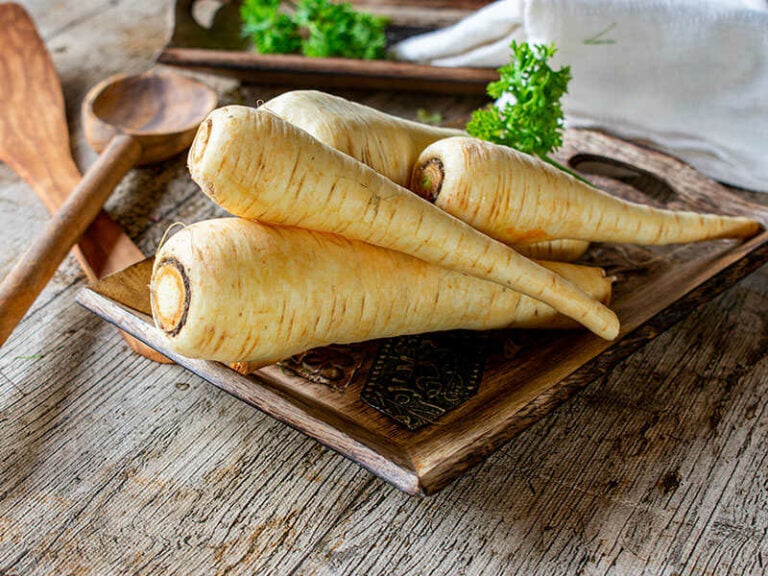
Parsnip
It’s a root vegetable similar to carrots, with a sweet, nutty flavor, often roasted or made into soups.
The list of P-named veggies is longer than that, so make sure to explore the full array for more delightful options!
No matter what kinds of fruits they are, these P fruits taste delicious and provide multiple benefits to your health.
So, do you know any other fruits beginning with P that I haven’t mentioned yet? If so, please share your knowledge with me via comments. Also, share this article with your friends and family if you think it’s helpful.
Don’t go anywhere yet since there are many other fruits starting from A to Z for you to explore!

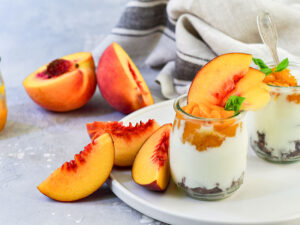
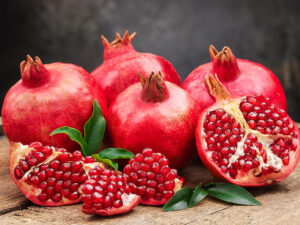
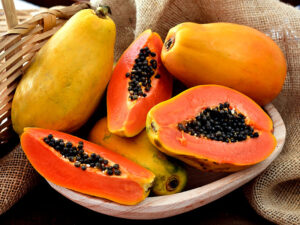
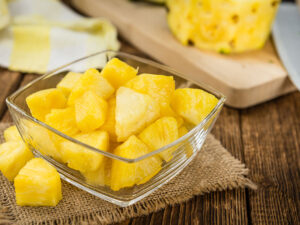
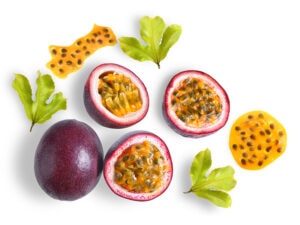
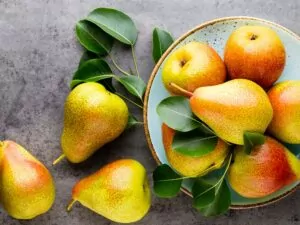
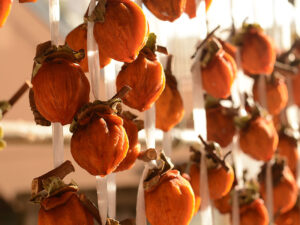
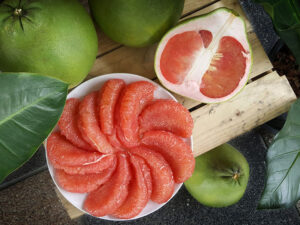
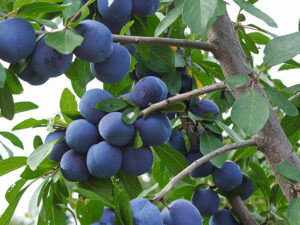
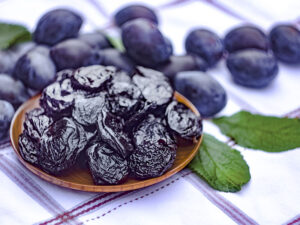
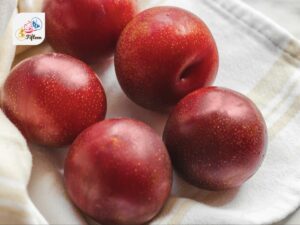
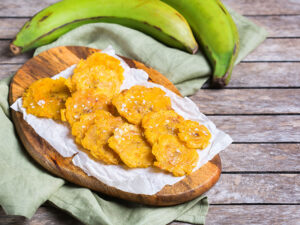
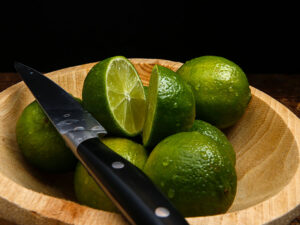
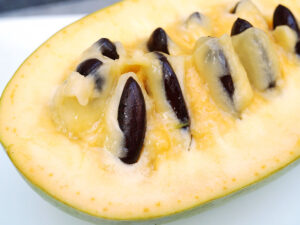
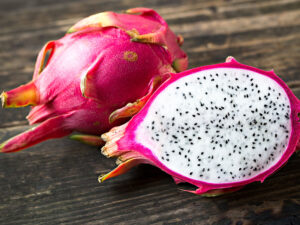
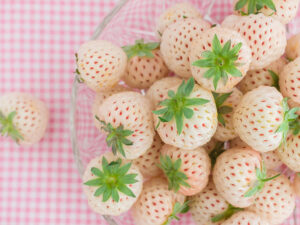
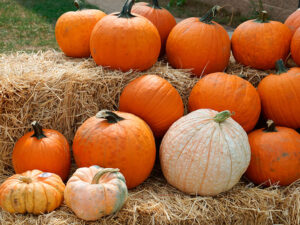
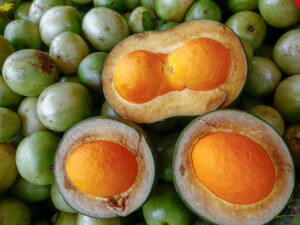
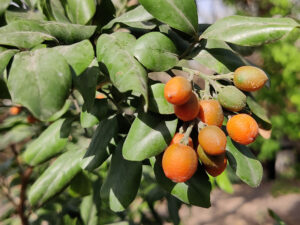
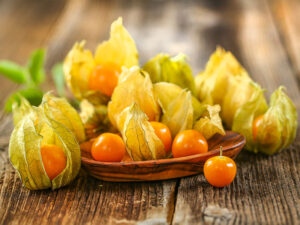
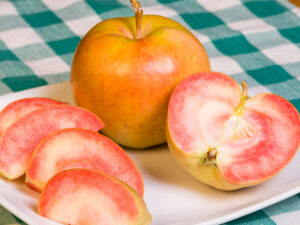
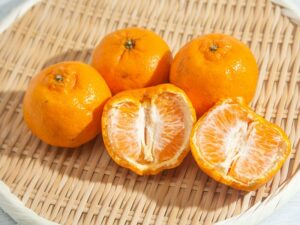
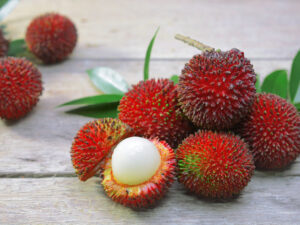
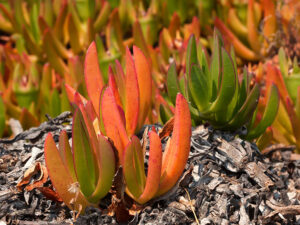

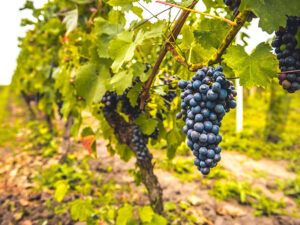
Jamie Scott
Editor in Chief, Senior Content Writer
Expertise
Home Cooking, Meal Planning, Recipe Development, Baking and Pastry, Food Editor, Cooking-video Maker, Western Food Evaluation Expert
Education
Le Cordon Bleu College of Culinary Arts
Local Community College, New York, NY
Jamie Scott is a skilled culinary expert and content creator specializing in Western cuisine. With over 15 years in the culinary field and formal training from Le Cordon Bleu, Paris, Jamie deeply understands how to blend nutrition with delicious flavors. His passion for cooking matches his commitment to making healthy eating accessible and enjoyable.
On Fifteen.net, Jamie brings a fresh perspective to classic dishes and beverages, offering readers insightful recipes, cooking tips, and a fresh view on meal planning that emphasizes taste, health, and simplicity.